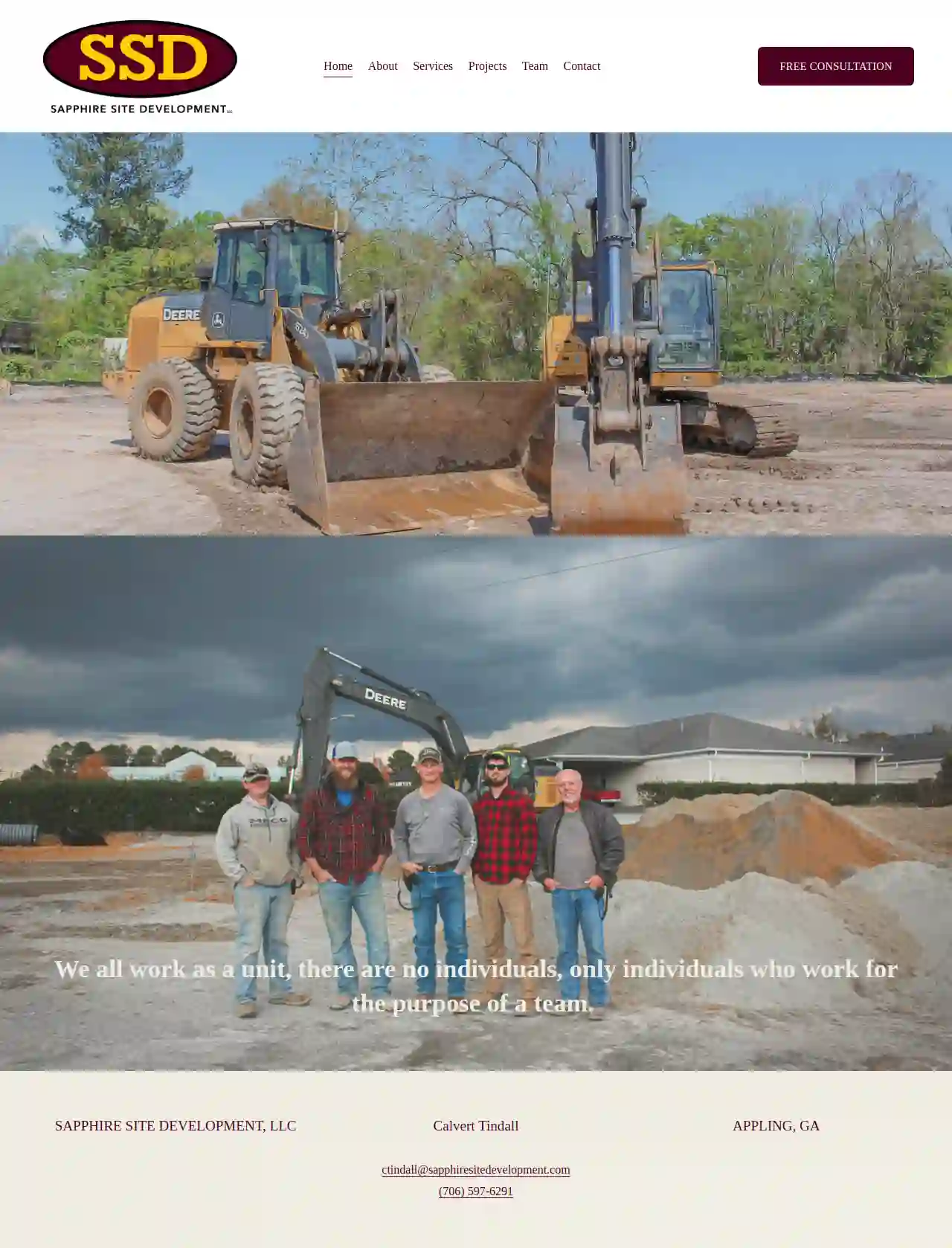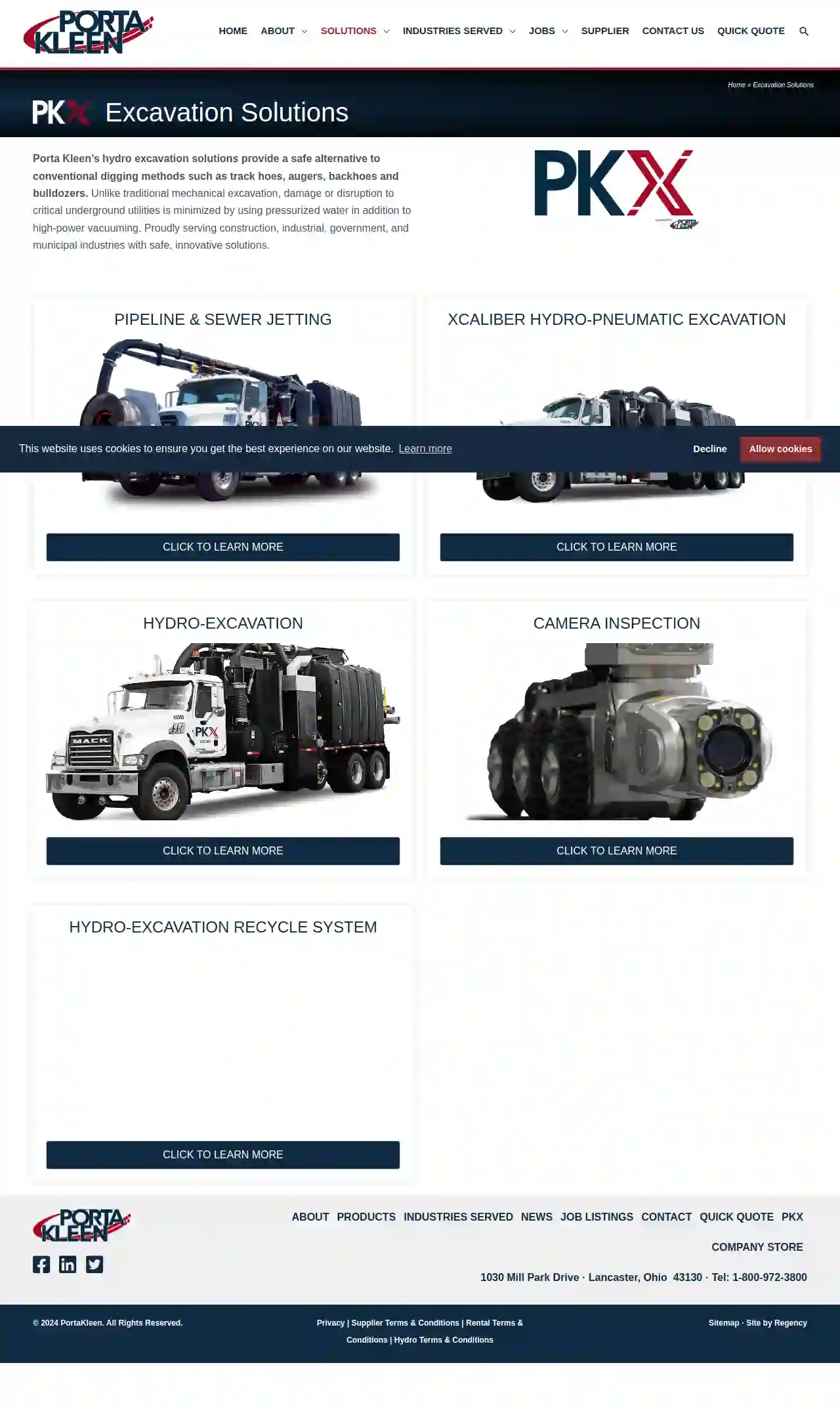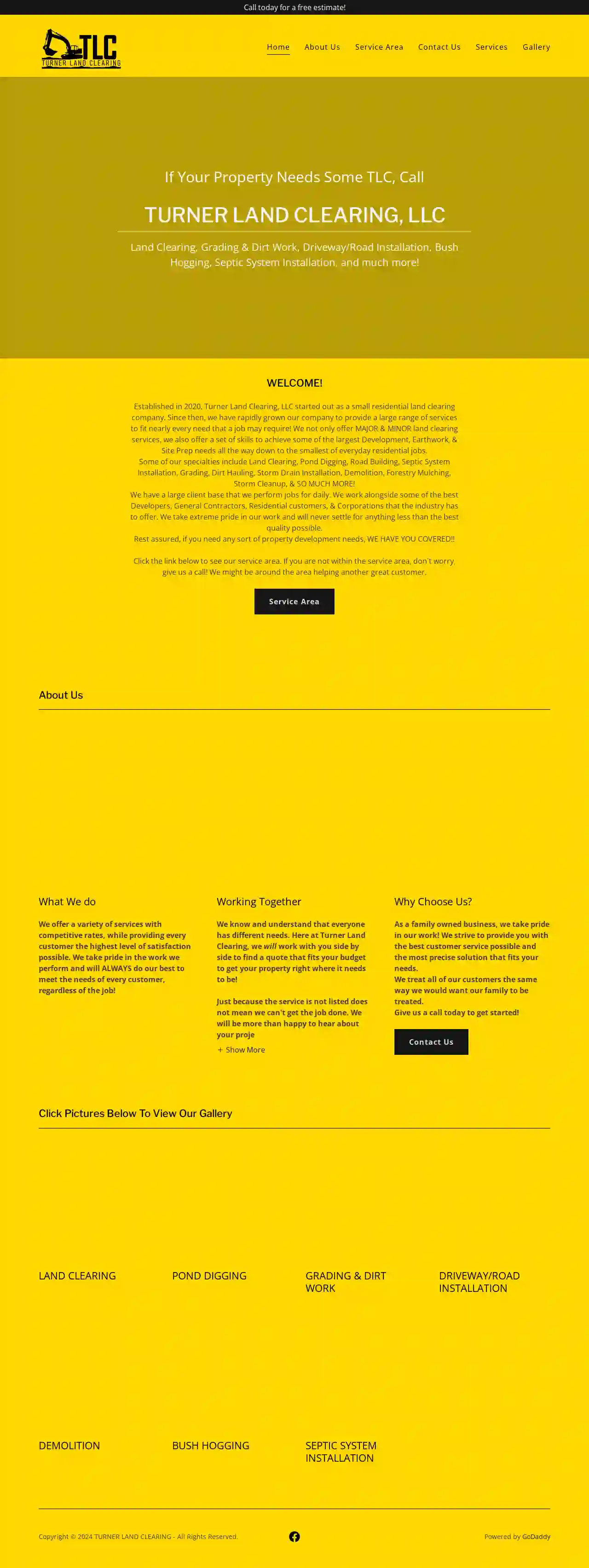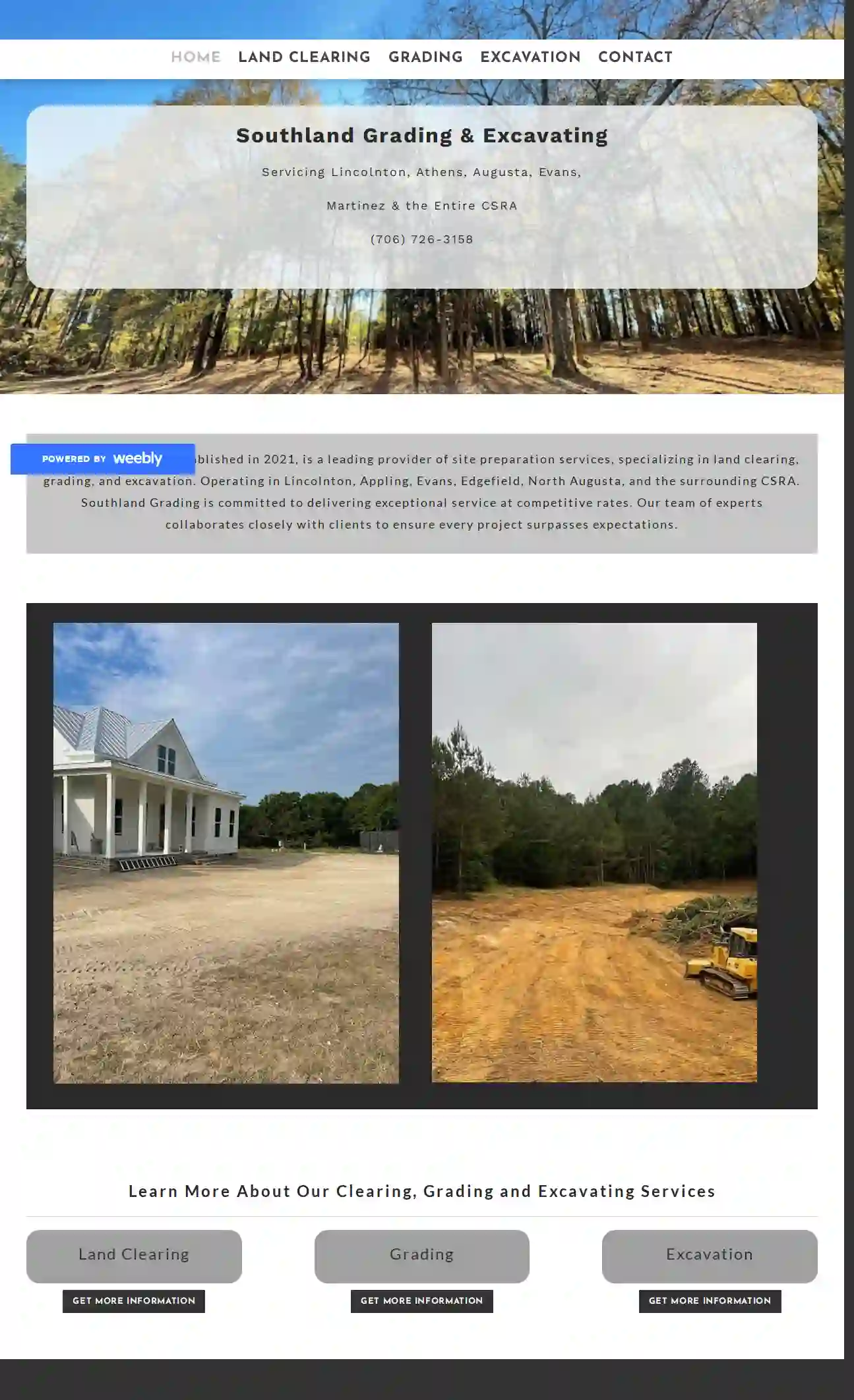Demolition Contractors Baxley
Best Demolition Contractor in Baxley
Get up to 3 Demolition Experts quotes for your project today! Compare profiles, reviews, accreditations, portfolio, etc... and choose the best deal.

Spohn Excavating Inc
4285 State Route 668 S, Junction City, 43748, USWorld Class Workmanship – Serving Lancaster, OH and the Surrounding Cities For almost two decades the professionals at Spohn Excavating Inc have taken pride in delivering world-class workmanship on a variety of residential and commercial full excavating and site development projects. Call Us Today (740) 605-6264 to Receive a Free Estimate! Commercial and Residential Services Located in Junction City, Ohio, Spohn Excavating Inc. is recognized for superior results in communities throughout Fairfield, Perry, Pickaway, Hocking, Muskingum and Morgan Counties, including Heath, Hebron, Lancaster, Logan, Newark, Thornville, New Lexington, New Straitsville, Somerset, Gore, Rockbridge, Greendale, Webb Summit, Enterprise, Roseville, Haydenville, Crooksville, Granville, Junction City, and Rushville. We take great pride in our workmanship to bring you the best quality.
- Services
- Why Us?
- Gallery
Get Quote
Coastal Grading & Rental Inc
46 reviews1245 Sand Hill Rd, Guyton, GA, 31312, USTo Our Customer's Coastal Grading is committed to providing the highest quality, value-added site preparation services to our coastal Georgia and South Carolina customers. We believe that by creating a successful partnership with our customers throughout the project process, we can exceed their expectations and gain their trust. We pledge to do this through the exceptional performance of every member of the Coastal Grading team. The Short Version Of Our Story Founded in 1981 by Gerald Odom, Coastal Grading began with a modest start. After 10+ years working as a foreman with local asphalt paving companies, Gerald start Coastal Grading and Rental with a pickup truck, a backhoe and a trailer. Gerald’s hard work and integrity paid off quickly growing the company to one of the most highly respected site-work contractors in the Low Country. It became a common theme in the Savannah Market that “no one could out work Gerald Odom”. His dedication set the bar for everyone that joined the Coastal Grading Team. Coastal Grading has provided a wide variety of site-work services throughout the Low Country over the past 40+ year; everything from truck yard maintenance to large warehouse construction. Colonial Terminals yard maintenance, SCAD Ronald C. Waranch Equestrian Center, Ellis Square and Underground Parking Garage, SCAD’s Sands at One West Victory, Benedictine Military School Parade Ground, are only a few of the successful projects of Coastal Grading’s long esteemed history. Gerald’s most successful achievement was building the best commercial grading team in the Savannah Market. After over 50 years in the commercial construction business, Gerald Odom turned over the reigns to Brian Hussey. A well-known, well-respected local businessman, whose father was Roy Hussey, founder of Hussey-Gay-Bell Engineering firm. Brian came “full circle” from holding a survey rod during summer jobs with Hussey-Gay-Bell to owning a civil construction company. It is well known in the commercial construction arena in the Low Country, if you want it done right, hire Coastal Grading. Get To Know Our Team After 40 years of successful leadership in the Site Preparation Industry, Gerald Odum has “passed the torch” to Brian and CG Partnership LLC. Brian brings a unique combination of talents and experiences to his role as the new leader of Coastal Grading including organizational and financial expertise, a strong work ethic, and a commitment to customer satisfaction. Brian is a proven leader with a passion for the construction industry and a deep understanding of the needs of our customers.
- Services
- Why Us?
- Our Team
- Testimonials
- Gallery
Get Quote
Sapphire Site Development LLC
APPLING, USSapphire Site Development, SSD, delivers the highest quality services with team members who are committed to excellence, safety, honesty, and hard work. My Dad introduced me to this business 36 years ago. I grew to love it immediately and soon afterwards began my own business carrying on the tradition of hard work and a determination to execute a job well done not only for my customers, but for my reputation. I still love what I do and the satisfaction of a job well done, a job that would make my dad proud and a legacy that my own sons would want to be a part of. Over the years the name of the business has changed with acquired experience and opportunities for growth, but the commitment to provide a service of satisfaction guaranteed has remained. — Calvert Tindall, Owner
- Services
- Why Us?
- Our Team
- Gallery
Get Quote
PKX Excavation Services - Powered by Porta Kleen
55 reviews1030 Mill Park Drive, Lancaster, 43130, USPorta Kleen's hydro excavation solutions offer a safe alternative to traditional digging methods like track hoes, augers, backhoes, and bulldozers. Unlike conventional mechanical excavation, our approach minimizes damage or disruption to critical underground utilities by utilizing pressurized water alongside high-power vacuuming. We proudly serve construction, industrial, government, and municipal industries with safe, innovative solutions.
- Services
- Why Us?
- Gallery
Get Quote
GS Excavation & Hydroseeding
57 reviewsColumbus, USWelcome to GS Excavation and Hydroseeding Welcome to GS Excavation and Hydroseeding. Our main goal is to always achieve a high level of customer satisfaction with the services and products that we provide. We offer both Commercial and Residential Excavation, and HydroSeeding. No project is too big or too small for us. We also offer Commercial Snow and Ice removal. Please browse our site to discover what we’re all about. Call us Email us
- Services
- Why Us?
- Gallery
Get Quote
Genco Concrete
4.720 reviewsColumbus, USGenco Concrete: Your Trusted Concrete Partner in Columbus, Ohio Genco Concrete is a family-owned and operated concrete company serving Columbus, Ohio and surrounding areas since 2003. We are dedicated to providing our customers with high-quality concrete services at an affordable price. We believe in working together with our customers to achieve their goals, and we are committed to providing excellent customer service. Why Choose Genco Concrete? 20+ years of experience in the concrete industry A commitment to customer service and satisfaction A focus on education and transparency Competitive pricing and affordable options A team of skilled and experienced professionals Our Services We offer a wide range of concrete services, including: Driveways Patios Stamped Concrete Sidewalks New Construction Concrete Pole Barn & Garage Concrete Commercial Concrete Our Values At Genco Concrete, we believe in: Trust: We put our customers' needs first and guarantee their satisfaction. Respect: We provide clear and honest information to our customers. Communication: We keep our customers informed throughout the entire process. Education: We educate our customers about their options and help them make informed decisions.
- Services
- Why Us?
- Gallery
Get Quote
Macallan Construction
1642 Powers Ferry Road Southeast, Suite 250, 1642 Powers Ferry Road SoutheastSuite 250, Marietta, 30067, USAbout Us Founded in 2002, Macallan Construction is a versatile general contractor that is known for seamlessly executing complex projects in occupied environments. Based in Atlanta, Macallan takes pride in its ability to tailor custom solutions to meet the challenging and diverse needs of our clients. We were founded by principals that were able to bring together their complementary skills to form a diversified company with the ability and experience not typically found in a commercial general contractor our size. By integrating all aspects of the construction industry, Macallan can execute the most challenging construction projects and deliver the highest quality end-product for the best possible price. Macallan’s management team comes from diverse backgrounds in real estate development, engineering, and general contracting, providing a unique perspective on the needs of our clients. Our goal is to provide value added services to our clients with integrity and professionalism. Macallan’s field personnel are some of the most experienced and professional in the southeastern United States. Our employees are trained in the latest building techniques, and are dedicated to providing quality and value to our clients in a safe and environmentally responsible manner. Macallan Construction is a division of The Macallan Group LLC, a portfolio of construction and real estate companies.
- Services
- Why Us?
- Our Team
- Gallery
Get Quote
Z Excavation & Plumbing
4.939 reviews1340 Emig Rd, Columbus, 43223, USZ Excavation Can Now Handle All Your Plumbing Repairs Interior and Exterior! Z Excavation Plumbing & WE COME THROUGH FOR YOU WHEN YOU NEED US MOST CALL US FOR A FREE QUOTE! Exterior Services With our highly trained employees we will get the job done right and safely! Water Main Repair and Replacement- Trenchless A leaking or damaged water line can cause major damage, and if the leak occurs inside your home, costly water damage is likely as well. When you need an expert plumber for water line repair or replacement, turn to our team at Z Excavation. We offer trenchless service repairs on most water lines .We have the tools and equipment to find and repair leaks quickly, and we offer a wide range of repair options to fit most budgets and circumstances. Plus, all our repairs are backed by a one-year warranty. With replacements we offer 10 year warranty Sewer Repair and Replacement A broken sewer pipe is a problem that cannot wait for a fix. Even in the dead of winter, if your sewer pipe has failed, rendering your home wastewater system inoperative, it has to be fixed immediately. Beyond the simple symptoms of a foul odor coming from your drains, the reality is that once a sewer line begins to suffer problems, without a prompt fix, a full backup is inevitable. That means waste water will flow where it doesn’t belong, leading to damage and contamination of your property as well as an expensive headache. Downspout Drains / Storm Drains Why do you need to bury downspouts underground? Why not discharge at the side of the house? All downspouts will be installed with sched 40 and cleanouts at each connection for easy drain cleaning and longevity . Most of the time a homeowner contacts us to bury their downspouts because their 4 ft. aluminum extension is a nuisance and an eyesore. But the benefits of running downspouts underground go far beyond convenience and aesthetics. Most importantly, they direct roof runoff water as far away from the foundation as possible, protecting often one of your largest investments – your home. Damp basements can smell and cause mold/ damage to your home. Often rather then having your whole basement re-done its just as simple as getting rain water away from your foundation. Sewer Cleanout Sewer cleanouts are necessary to clear blockages such as roots and grease and other build ups. If you have ever had a cleanout cleared from inside the home then you know how messy and stinky that can be. So having a exterior access to your sewer has its benefits! Backwater Valve Keep your basement dry and protected from city backups. A backwater valve is a back flow prevention device that is designed to allow water or sewage to flow in only one direction, out of your house. In the event there is some kind of blockage in the city sewer line or the city sewer lines are overwhelmed by heavy rainfall or runoff from snow melt (causing a sewer system backup) the best way to protect your home is with a sewer backwater valve. A properly maintained backwater valve will not allow sewage from the city sewer to flow back to your house. Land Clearing- Grading When you need your backyard or land cleared with heavy equipment trust us to bring it up to par. Whether you’re building a new home in Columbus Ohio and surrounding areas and need fill dirt, fill sand, or topsoil hauled and graded or your renovating an existing property, site preparation and grading will be key to the success of your project. A quality grading job will ensure that your site drains properly and does not flood or hold water. Brush Hog Have tall grass and brush? We have you handled. We have skid steer with a mower attachment that can handle most anything we can throw at. As well as a excavator to pull stumps and large boulders Concrete Removal Big or small we can handle ripping up that busted concrete drive way, patio, or parking lot. Interior Plumbing Services We can handle all of your interior plumbing needs .From a simple water heater swap to replacing those old cast iron drains!
- Services
- Why Us?
- Gallery
Get Quote
Turner Land Clearing, LLC
52 reviewsTownsend, GA, 31331, USAbout Turner Land Clearing, LLC Established in 2020, Turner Land Clearing, LLC began as a small residential land clearing company. Since then, we've expanded rapidly to offer a wide range of services, catering to almost any project need. We specialize in both major and minor land clearing, and we possess the skills to handle large-scale development, earthwork, and site preparation projects, as well as smaller everyday residential jobs. Our expertise encompasses Land Clearing, Pond Digging, Road Building, Septic System Installation, Grading, Dirt Hauling, Storm Drain Installation, Demolition, Forestry Mulching, Storm Cleanup, and much more! We work with a diverse client base, including Developers, General Contractors, Residential customers, and Corporations, and we take immense pride in our work, always striving for the highest quality. If you have any property development needs, we've got you covered! Check out our service area below. If you're outside the service area, don't hesitate to call us. We might be nearby assisting another satisfied customer.
- Services
- Why Us?
- Gallery
Get Quote
Southland Grading
517 reviewsAugusta, USAbout Southland Grading Southland Grading, established in 2021, is a leading provider of site preparation services, specializing in land clearing, grading, and excavation. Operating in Lincolnton, Appling, Evans, Edgefield, North Augusta, and the surrounding CSRA, Southland Grading is committed to delivering exceptional service at competitive rates. Our team of experts collaborates closely with clients to ensure every project surpasses expectations.
- Services
- Why Us?
- Gallery
Get Quote
Over 22,076+ Excavation Pros on our platform
Our excavation experts operate in Baxley and surrounding areas!
ExcavationHQ has curated and vetted Top Excavation Businesses arround Baxley. Find a reliable pro today.
Frequently Asked Questions About Demolition Contractors
- Implosion: Using explosives to collapse a structure inwards rapidly. Suitable for large buildings in open areas.
- Wrecking Ball: Swinging a large steel ball to impact and break down the structure. Effective for bringing down walls and other solid elements.
- High-Reach Demolition: Utilizing specialized excavators with extended arms and demolition attachments for dismantling tall structures piece by piece.
- Selective Demolition: Removing specific parts of a building while preserving other sections. Often used in renovation projects.
- Deconstruction: Carefully dismantling a building to salvage reusable materials, reducing waste and environmental impact.
- Permits and Regulations: Obtain all necessary demolition permits and comply with local building codes and environmental regulations.
- Contracts: Have a clear and comprehensive contract with the demolition contractor outlining the scope of work, payment terms, and liabilities.
- Environmental Laws: Comply with environmental laws regarding hazardous material removal, waste disposal, and pollution control.
- Neighboring Property Rights: Respect neighboring property rights and take measures to prevent damage or disruption to adjacent properties.
- Worker Safety: Adhere to worker safety regulations and provide a safe working environment for demolition crews.
What are the different types of demolition?
What is a demolition bond?
What are the legal considerations for demolition projects?
What is asbestos abatement?
What are the different types of demolition?
- Implosion: Using explosives to collapse a structure inwards rapidly. Suitable for large buildings in open areas.
- Wrecking Ball: Swinging a large steel ball to impact and break down the structure. Effective for bringing down walls and other solid elements.
- High-Reach Demolition: Utilizing specialized excavators with extended arms and demolition attachments for dismantling tall structures piece by piece.
- Selective Demolition: Removing specific parts of a building while preserving other sections. Often used in renovation projects.
- Deconstruction: Carefully dismantling a building to salvage reusable materials, reducing waste and environmental impact.
What is a demolition bond?
What are the legal considerations for demolition projects?
- Permits and Regulations: Obtain all necessary demolition permits and comply with local building codes and environmental regulations.
- Contracts: Have a clear and comprehensive contract with the demolition contractor outlining the scope of work, payment terms, and liabilities.
- Environmental Laws: Comply with environmental laws regarding hazardous material removal, waste disposal, and pollution control.
- Neighboring Property Rights: Respect neighboring property rights and take measures to prevent damage or disruption to adjacent properties.
- Worker Safety: Adhere to worker safety regulations and provide a safe working environment for demolition crews.